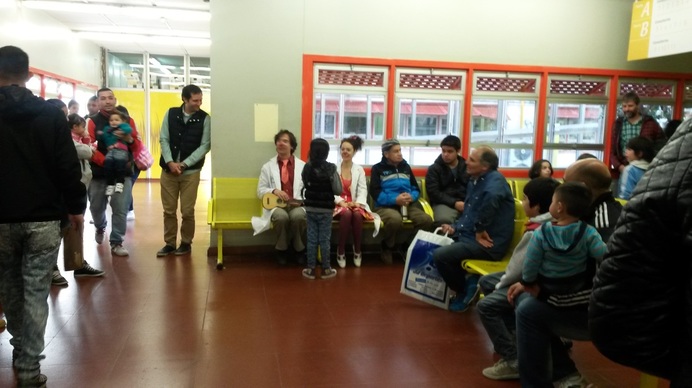|
During both of my observations this week, I was really interested to see how the clowns were received in both hospitals by staff and professionals - with a state law making hospital clowns compulsory (more on this later) and a national hospital clown day, I wondered if there would be a wider cultural acceptance of clowns in general and of the work in hospitals. The truth is, on the surface of things I saw very little difference. Some domestic staff, nurses and doctors clearly loved the clowns being there, were open to playful interactions. Others seemed indifferent. One or two who had felt negatively towards the clowns had been carefully won over, over the course of many weeks, and were now big fans. Likewise with the families and children that they visited. In general, reactions were lovely - tender and full of laughter - but, just like at home, there were some who were shy, a little afraid, not interested, too poorly. I love the photo below as it shows a totally enthralled little girl who immediately started to play with the clowns, others watching intently, and a man sitting right next to Dra Nivea Pons who is completely oblivious to it all. He didn't move or react throughout the whole performance!  A note on the work that I observed - I was again heartened and amazed to see the similarities in our artistic work. The language of clown really is universal, and the need for children, wherever they may be, to play, is also.
I will write more on the integration of hospital clowns in Buenos Aires and the various challenges that Alegria Intensiva face in that regard anon...thoughts still filtering in!
0 Comments
Leave a Reply. |
AuthorI am a therapeutic clown and performer. Writing here is part of my wider practice and maybe some of my thoughts will trigger some thoughts of your own and I hope that helps. Archives
May 2024
Categories |
 RSS Feed
RSS Feed